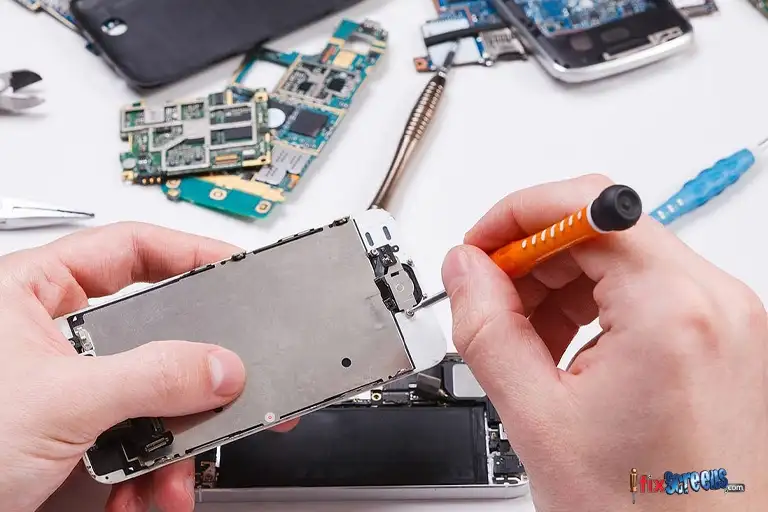Proactive Maintenance: Tips for Ensuring Longevity and Performance of Your Device
Various device care and maintenance strategies exist to keep your equipment in top shape. While some businesses still rely on reactive or preventive methods, proactive maintenance has emerged as the most efficient and cost-effective approach. This comprehensive guide will dig deep into proactive maintenance, explore the differences between reactive and predictive maintenance, and provide valuable insights on implementing and optimizing an aggressive maintenance strategy.

Key Takeaways
- The importance of proactive maintenance and how it differs from reactive and predictive approaches are introduced.
- Discusses key components of proactive maintenance, including maintenance management, budget allocation, inspections, and data analysis.
- Outlines the advantages of adopting proactive maintenance, such as minimized downtime, cost savings, improved safety, and optimized maintenance processes.
Proactive Maintenance vs. Reactive Maintenance
Back in the day, organizations waited for equipment to fail before taking action. Reactive maintenance, characterized by addressing issues only when they occur, can lead to costly Downtime, emergency repairs, and decreased overall equipment lifespan. In contrast, proactive maintenance identifies potential problems before they escalate into failures.
Proactive maintenance strategies enable businesses to stay ahead of the curve by systematically approaching daily operations. Instead of addressing failure modes as they occur, proactive maintenance identifies and eliminates root causes, making data-driven decisions based on historical data and condition monitoring.
Proactive Maintenance vs. Predictive Maintenance:
While proactive maintenance aims to prevent equipment failures before they happen, predictive maintenance takes a different approach. Predictive maintenance utilizes tools like IoT (Internet of Things) and Condition-Based Maintenance (CBM) to allocate resources effectively and reduce Downtime.
Proactive Maintenance, on the other hand, relies on historical data, inspections, and the analysis of equipment conditions to identify hidden inefficiencies and make informed decisions. The proactive approach is beneficial for critical equipment and assets.
Proactive Maintenance Strategies
Developing a proactive maintenance strategy is a multifaceted process that involves several key components. Let's explore these strategies and the best practices to achieve long-term device care and maintenance.
1. Maintenance Management
Efficient maintenance management is at the core of proactive maintenance. It involves creating a maintenance calendar, assembling a dedicated maintenance team, and implementing a Computerized Maintenance Management System (CMMS) to elevate maintenance processes. A well-organized workflow, supported by CMMS, enables you to streamline maintenance work orders, saving time and money.
2. Maintenance Budget:
To ensure the sustainability of your proactive maintenance program, you must allocate a maintenance budget. By implementing cost-effective strategies, you can minimize unplanned downtime and repair costs, ultimately increasing profitability. This is achieved by making data-driven decisions and optimizing maintenance tasks based on criticality and historical data.
3. Inspection and Condition Monitoring
Regular inspections are pivotal in proactive maintenance. You can identify worn-out components, potential safety hazards, and maintenance needs through condition monitoring. This information empowers you to plan and allocate resources efficiently, addressing critical components and safety concerns in real time.
4. Data Analysis and Predictive Insights
Proactive maintenance heavily relies on data analysis. By collecting and analyzing real-time data, you can predict potential equipment failures and safety hazards, allowing you to take timely action. This approach not only increases productivity but also extends equipment longevity.

Benefits of Proactive Maintenance
Adopting proactive maintenance can yield numerous benefits for businesses across various industries.
1. Minimized Downtime
Proactive maintenance ensures that your equipment is well-maintained, reducing the likelihood of unexpected Downtime. You can keep your operations running smoothly by addressing issues before they cause breakdowns.
2. Cost Savings
A well-implemented proactive maintenance program is cost-effective in the long run. You can minimize repair costs and increase profitability by allocating resources wisely and addressing critical components.
3. Improved Safety
Proactive maintenance allows you to identify and address safety hazards before they become critical. This protects your employees and prevents costly accidents and legal liabilities.
4. Optimized Maintenance Processes
Efficient maintenance management, supported by CMMS, streamlines maintenance tasks and ensures that work orders are managed effectively. This leads to an overall increase in operational efficiency.
Implementation of Proactive Maintenance
To implement a proactive maintenance approach effectively, consider the following steps:
1. Develop a Proactive Maintenance Strategy
Start by creating a well-defined proactive maintenance strategy that aligns with your business goals. Outline the specific tasks, timelines, and resources required.
2. Creating a Proactive Maintenance Calendar
Develop a maintenance calendar that schedules inspections, maintenance work, and other critical tasks. This calendar will help you stay organized and ensure that maintenance is conducted regularly.
3. Leveraging a Computerized Maintenance Management System (CMMS)
Implement a CMMS to elevate your maintenance processes. CMMS provides a centralized platform for work order management, data analysis, and resource allocation, making your maintenance program more efficient.
4. Make Data-Driven Decisions
Use historical data and real-time analytics to make informed decisions about maintenance priorities. This ensures that resources are allocated to the most critical areas, ultimately improving the overall reliability of your equipment.

Final Thoughts
In today's competitive business landscape, proactive maintenance is critical to operational excellence. Organizations can identify and deal with potential issues by adopting a data-driven, systematic approach to maintenance, ultimately ensuring their equipment's longevity and peak performance. Proactive maintenance minimizes Downtime and increases productivity, leading to significant cost savings and improved safety. It's time to adapt the power of proactive maintenance to make data-driven decisions to optimize your maintenance program. Stay ahead of the curve, and you'll reap the rewards of smooth operations, increased profitability, and equipment that stands the test of time.
FAQ's
Q: What is proactive device care and maintenance?
A: Proactive device care and maintenance refers to regularly and systematically managing the maintenance and upkeep of devices to ensure their longevity and optimal performance. It involves taking preventive measures to identify and address potential issues before they become significant problems and implementing proactive strategies to improve overall maintenance management.
Q: Why is proactive device care and maintenance important?
A: Proactive device care and maintenance is vital because it helps to minimize downtime and increase uptime by preventing unexpected breakdowns and malfunctions. It also helps to reduce maintenance costs in the long run by addressing issues before they escalate into costly repairs.
Q: How can I implement proactive device care and maintenance?
A: To implement proactive device care and maintenance, you should establish a regular maintenance schedule and perform routine preventive maintenance tasks. It would be best to leverage data-driven decision-making to analyze and learn from past maintenance work to optimize future maintenance efforts.
Q: What is the difference between preventive maintenance and proactive maintenance?
A: Preventive maintenance involves regularly scheduled tasks to prevent equipment failure and ensure optimal performance. Proactive maintenance, on the other hand, goes beyond preventive maintenance by taking a proactive approach to maintenance management. It involves analyzing data, identifying potential issues, and implementing prevention strategies.
Q: How does proactive maintenance improve maintenance management?
A: Proactive maintenance improves maintenance management by minimizing unexpected breakdowns and malfunctions, reducing maintenance costs, and increasing uptime. It allows organizations to plan and prioritize maintenance work more effectively, resulting in optimized asset maintenance.
Q: What does a proactive approach to maintenance involve?
A: A proactive approach to maintenance involves regularly monitoring and collecting data on equipment performance, leveraging data analysis to identify potential issues, and taking steps to prevent them before they cause significant problems. It requires a shift from reactive maintenance to proactive and preventive strategies.
Q: Why is regular preventive maintenance essential?
A: Regular preventive maintenance is essential because it helps identify and address problems before they become more severe. By performing routine tasks such as cleaning, lubricating, and inspecting equipment, you can prolong the lifespan of your devices and optimize their performance.